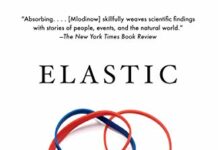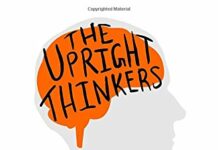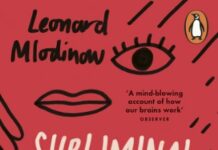
Ebook Info
- Published: 2003
- Number of pages: 196 pages
- Format: PDF
- File Size: 0.65 MB
- Authors: Leonard Mlodinow
Description
Einstein’s Dreams meets Tuesdays with Morrie in Leonard Mlodinow’s touching memoir about the guidance granted him by his mentor, the brilliant physicist Richard Feynman.For some, it was that special connection with a grandparent or a football coach, a boss, or a cleric. For Leonard Mlodinow, as a young physicist struggling to find his place in the world, the relationship that would most profoundly influence his life was with his mentor, the Nobel Prize-winning physicist Richard Feynman. Drawing on transcripts from his many meetings with Feynman during their time together at Cal Tech, Mlodinow shares Feynman’s provocative answers to such questions as “What is the nature of creativity?” and “How does a scientist think?” At once a moving portrait of a friendship and an affecting account of Feynman’s final, creative years, FEYNMAN’S RAINBOW celebrates the inspiring legacy of one of the greatest thinkers of our time.
User’s Reviews
Reviews from Amazon users which were colected at the time this book was published on the website:
⭐There are a number of books about Richard Feynman. They include several biographies, anecdotes, as well as compilations of his letters and short works. “Feynman’s Rainbow” is somewhat unique, as it was the story of the interaction of a young physics faculty member (Leonard Mlodinow) and the terminally ill Richard Feynman at the last stage of his life.Mlodinow had always interested in chemistry and started college with a double major in chemistry and mathematics. When he was 20, he did volunteered work in a kibbutz (communal farm) in Israel. There in the library, he had read “The Character of Physical Law”, which were the Messenger Lectures Feynman gave at Cornell University in 1964. He also read the three volumes of “Feynman Lectures on Physics”. These books so impressed Mlodinow that, when he returned to the University of Chicago, he added Physics in his major. He went on to get a PhD in Physics at UC Berkeley. He hoped that someday, he would meet this Professor Feynman, who had so much influence on his decision to study physics.Mlodinow’s PhD dissertation was of such outstanding quality that he was offered an entry faculty position at Caltech in 1981, with a multiple year fellowship which enabled him to pursue research of his choosing. He was assigned an office which was just down the hall from the offices of Richard Feynman as well as Murry Gell-Mann.Broadly speaking, there are two kinds of physicists, the Babylonians and the Greeks. The Greek approach brings with it the full force of the logical machinery of mathematics. The Babylonian approach is based principally on the observation and interpretation of physical processes, and not driven by mathematics. Feynman considered himself a Babylonian, relying on his understanding of nature to guide him whenever it might lead. Gell-Mann was more the Greek type – wanting to categorize nature, to impose an efficient mathematical order on the underlying data.The author broadly described the history of modern physics, the distinguishing features of quantum physics as opposed to classical physics, the strong force in the nucleus, and even quarks. He told about the search for a theory that can unify all the forces, the promise and problem of string theory and the persistent work of John Schwartz on string theory. He gave an account of the rivalry between Feynman and Gell-Mann and their very different personalities. It is amusing to learn that Gell-Mann liked to pronounce names, city or person, in their original languages. For example, Montreal pronounced as Mon-ray-al, which prompted Feynman to ask “where?” The way Gell-Mann pronounced Mlodinow (probably in Polish) was incomprehensible to Mlodinow himself. The rivalry did not stop with Feynman’s death, as Gell-Mann’s Feynman obituary in the memorial issue of Physics Today had some unkind words of Feynman’s personal style and it raised eyebrows in the physics community.Mlodinow arrived at Caltech full of self-doubts. He wondered whether he would measure up to the expectations of this renowned institution. He was unsure what to work on in his research, but his preference was to work in the forefront of the field, such as string theory. There was a terrifying period (dates unclear from the book), during which he was falsely diagnosed as having testicular cancer. Meanwhile, down in the hallway, Feynman was terminally ill with cancer. When Mlodinow arrived at Caltech in 1981, Feynman just had his second cancer surgery. He had two more surgeries in 1986 and died on February 15, 1988.It was not clear in the book when Mlodinow left Caltech, but it was likely sometime in 1985. During the time he overlapped with Feynman, he sought out Feynman’s advice whenever he had a chance, although he had to somehow pass through the watchful eyes of Helen, the department secretary who assumed the role of guarding Feynman’s privacy. Although Mlodinow’s interactions with Feynman were sporadic and usually brief, their conversations did have a significant influence on his outlook on what is important in life in general and scientific research in particular. A few highlights:1. In their first meeting, Mlodinow told Feynman he recently read a book about the process of discovery. In it, there was a story about an ape named Nueva, who was able to obtain the food outside the cage by combing his two skills: (1) pushing things around with a stick; (2) reaching out through the cage bars for things. Mlodinow thought the story taught him one aspect of discovery: new ways of looking at old things. Feynman responded that the lesson he learned from the story was: If an ape can do it, so can you.2. Feynman’s love of physics was driven by nature’s beauty and his own curiosity. He chose research topics that he found “IN-ter-ES-ting”. He did not aim to be a leader or a pathfinder. He did not care what people think.3. Even cancer did not take away Feynman’s love of life and his childlike curiosity. He always knew how to get the most out of what the world had to offer, and how to get the most out of the talent with which God – or mere genetics – had blessed him. That’s all we can hope for in life.4. The only time that Feynman became emotional was when he said he may not live to see his beloved daughter Michelle grow up. (Fortunately, he did.)5. When Feynman was seven, he realized that death would come someday. On his deathbed, he saw the approaching death as his final discovery – what it is like to die. He thought it would be “IN-ter-ES-ting”.Mlodinow’s interactions with Feynman did alter his outlook on life. In physics research, instead of aiming to be a leader, he pursued topics which he himself found interesting. He continued collaboration with his friend Mark on quantum optics, which was regarded as “low-levelled” by his colleagues in Caltech except Feynman, who not only was interested but was able to point out that an earlier paper by Mlodinow and Mark was correct, and a long-standing paper was wrong.Mlodinow‘s interest in writing, including screen play, was scorned by his fellow physicists, especially his former undergraduate mentor, who in a visit to Caltech got very angry with him when learning he spent time on screen writing. The Professor called spending time on screen writing “an insult”.Fortunately, Feynman’s reaction to Mlodinow’s interest in writing was encouraging, and Mlodinow, in addition to pursuing research in physics, went on to become a successful writer. His book, Subliminal, coauthored with Deepak Chopra won the 2013 PEN/E. O. Wilson Literary Science Writing Award. He was coauthor, with Stephen Hawking, on “The Grand Design”, which was the No. 1 New York Times Bestseller. I think Feynman would be pleased, and found Mlodinow’s accomplishments as a writer “IN-ter-ES-ting“.
⭐Feynman’s Rainbow is an autobiographical account of Leonard Mlodinow’s first year after getting his Ph.D., which he spent at CalTech (1981-1982). His office happened to be between that of legendary and Nobel Prize winning physicists Richard Feynman and Murray Gell-Mann, and Mlodinow tells a few stories about interacting with the two. The conversations with Feynman were taped and are transcribed in the book, and it is interesting to hear many of his thoughts and thought processes, on everything from particle physics to the eponymous rainbow. The emphasis of the book isn’t Feynman, but rather Mlodinow, as he struggles with self-doubt and trying to find a research project as a young post-doc. If you are looking for something specifically about Feynman, you might want to skip this.Mlodinow produces ground-breaking work for his Ph.D. dissertation, and receives a fellowship at CalTech because of it. As is common to most young Ph.D.’s, Mlodinow suffers a bit of a dry spell and falls into thinking that he won’t be able to repeat his previous successes. Having switched from math and chemistry to physics upon reading one of Feynman’s books, Mlodinow hopes to be taken under Feynman’s wing as he begins his career as a scientist. Occasional hilarities ensue, but we do get to learn about different philosophical approaches to physics (manifested in the logical “Greek” Gell-Mann and the intuitive “Babylonian” Feynman), which also transcend to life experiences like the death of a loved one and career choices. I thought the most interesting parts of the book were the discussion what it means to be a scientist, and why they do what they do.I would recommend the book mostly to students of science. Feynman was an interesting and influential character that non-scientists would enjoy, and I don’t think that the details of string theory presented in the book were too confusing. I enjoyed the stories, and made me feel a little better about my own self-doubts I’m having in graduate school right now…not that I’m going to give it up and pursue writing for TV shows like the author.
⭐What an inspiration Feynman was ! Can’t get enough of his writing !
⭐This is actually a good book which gives an engaging account of the everyday thoughts and actions of the brilliant physicist, Richard Feynman. I found this when I purchased the book in 2003 under its original title of , “Some time with Feynman”. The latest reincarnation of Mlodinow’s book, “Feynman’s Rainbow”, is identical to the original apart from its title and cover design, yet makes no reference to its provenance. In my view, this is cynical marketing deception designed to revitalise interest in the original book. Hence my 1 star rating.
⭐I was disappointed when I recently received this book. Not because I disliked the content. I liked it; liked the physics and the stories of Feynman, Gell-Mann and the author. The reason I was disappointed was because I already had the book under the title Some Time With Feynman.
⭐The book is excellent even though the pages are a bit yellowish due to its old lifespan and also smell a little bit like ciggarette. Let’s say the book have personality due to its cheap price. But it is the best book that I have read so far. Love everything about it.
⭐Delivered in 5 days. No problems at all.
⭐Would be interesting to a PhD student loking for a project; a pleasant easy read for those who like this genre.
Keywords
Free Download Feynman’s Rainbow: A Search for Beauty in Physics and in Life in PDF format
Feynman’s Rainbow: A Search for Beauty in Physics and in Life PDF Free Download
Download Feynman’s Rainbow: A Search for Beauty in Physics and in Life 2003 PDF Free
Feynman’s Rainbow: A Search for Beauty in Physics and in Life 2003 PDF Free Download
Download Feynman’s Rainbow: A Search for Beauty in Physics and in Life PDF
Free Download Ebook Feynman’s Rainbow: A Search for Beauty in Physics and in Life



